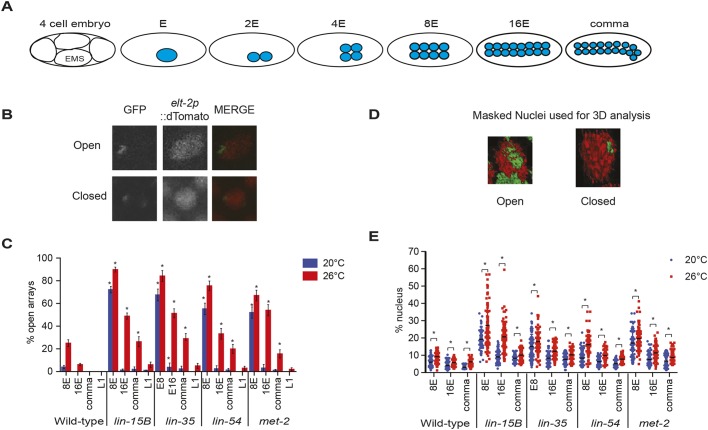Fig. 1.
Loss of synMuv B proteins causes a delay in chromatin compaction in the intestinal lineage during development. (A) Schematic representing the number of intestinal cells and the approximate number of total cells in the stages scored throughout this study. EMS, the precursor cell to the E lineage. (B) Representative images of intestinal nuclei with open and closed extra-chromosomal arrays. In merged image, green is LacI::GFP and red is elt-2p::dTomato. (C) Intestinal nuclei were scored as open or closed based on array morphology (Yuzyuk et al., 2009) in worms raised at 20°C and 26°C at the 8E, 16E, comma and L1 stages. Asterisks represent significant difference between the wild-type population at that stage and temperature (P<0.01, two-way ANOVA). Error bars indicate s.e.m. (D) Representative masked images of intestinal cell nuclei with open or closed extra-chromosomal arrays using the isosurface function in Metamorph; green is LacI::GFP and red is elt-2p::dTomato. (E) The array volume to nuclear volume ratio was measured using the isosurface function in Metamorph at 8E, 16E and comma at 20°C and 26°C. Each dot represents a single intestinal cell and the line represents the median. Asterisk represents a significant difference between 20°C and 26°C (P<0.01, two-way ANOVA).

